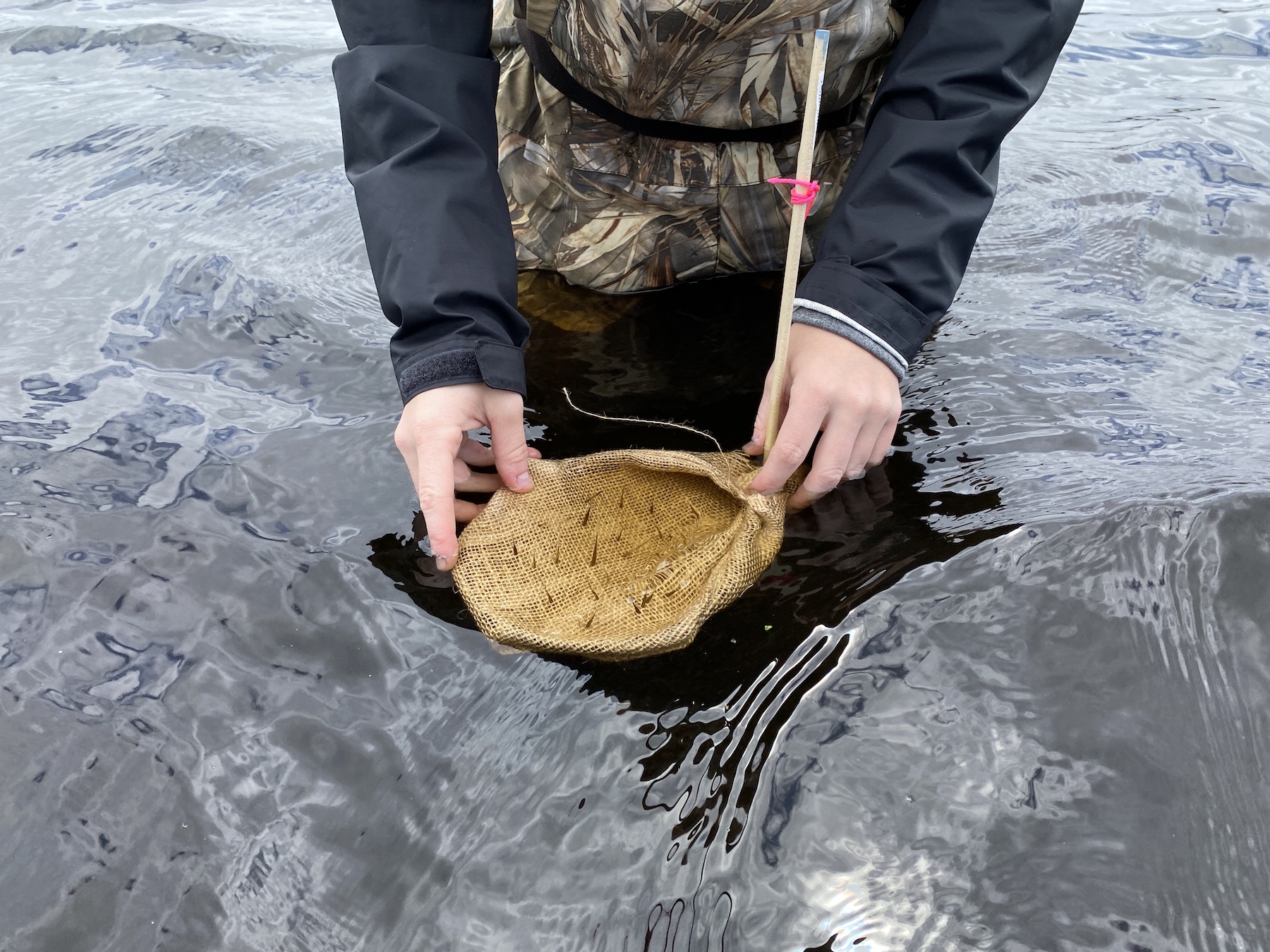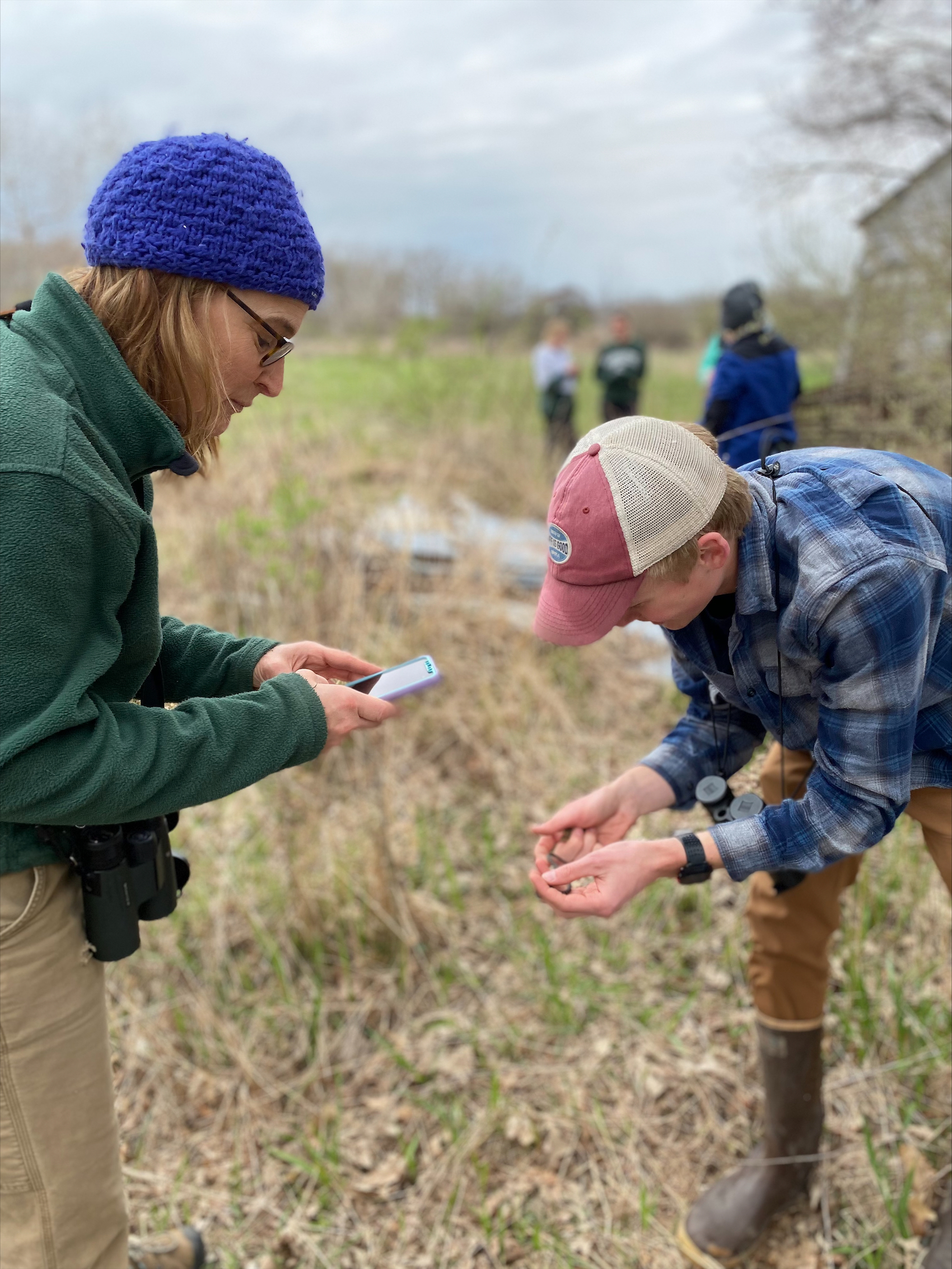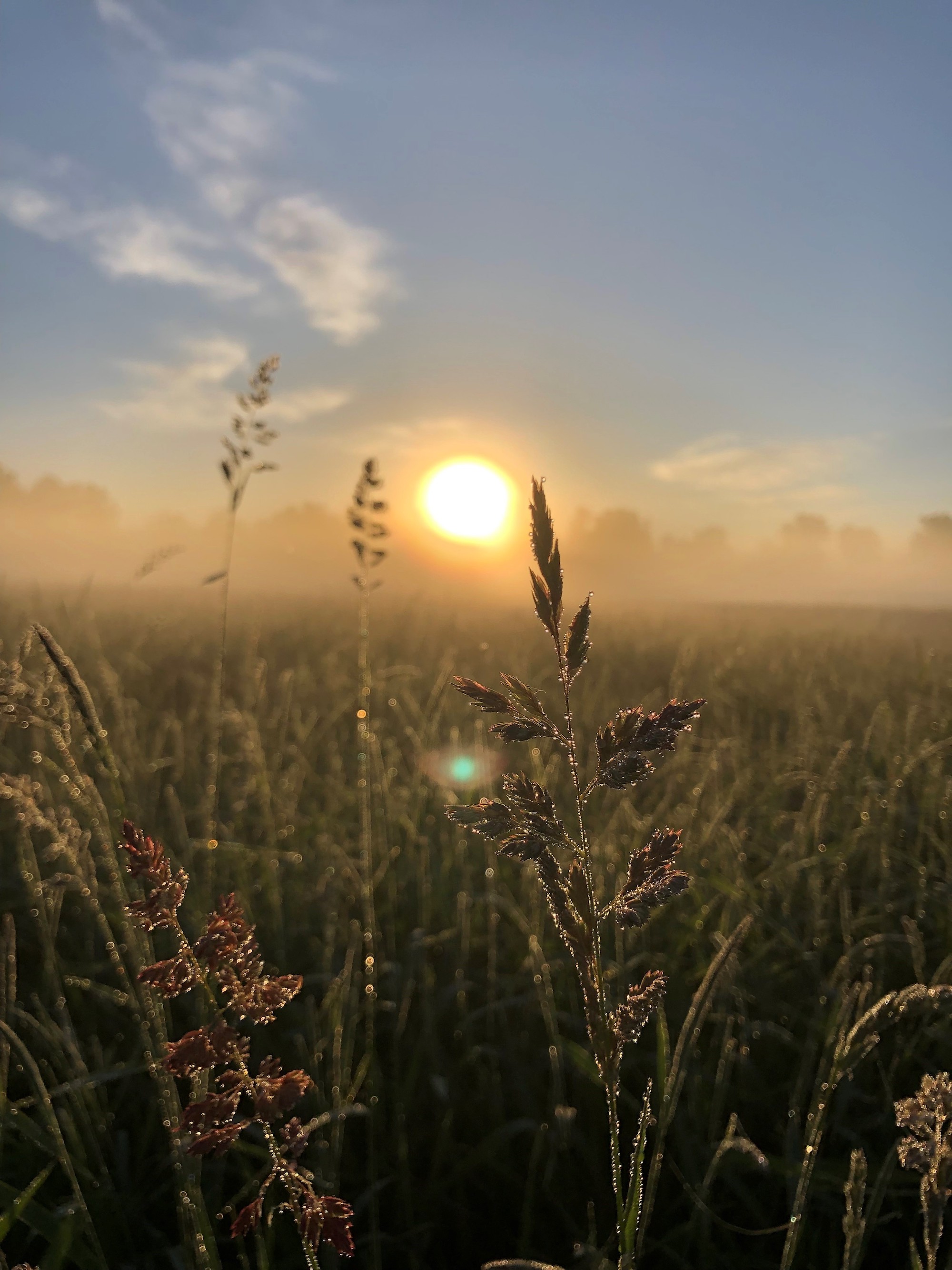In 2021, Kailee Pearson spent her summer in Michigan’s Upper Peninsula. Interning with the Sault Tribe Wildlife Program as a field technician, Pearson, who will graduate from Michigan State University with a degree in fisheries and wildlife this December, traveled around Sault Ste. Marie, hiking and kayaking to different sites along the St. Mary’s River and Munuscong Bay. She monitored invasive plants, surveyed bird species and nesting sites, and tracked data on wild rice growth.
Pearson, a member of the Sault Ste. Marie Tribe of Chippewa Indians, loved the experience — especially the work she was doing with wild rice. So much so that she was able to continue the research this spring. She did not have to travel to the U.P., though. Pearson brought wild rice research to the Corey Marsh Ecological Research Center, about 20 minutes northeast of East Lansing.
Working with Jen Owen, coordinator of the research center and associate professor and associate chair in the Department of Fisheries and Wildlife, Pearson set up her own research project to study Indigenous wild rice, looking at ways to grow in different conditions. Michigan’s wild rice, Manoomin, is important to many wetlands in the state and culturally significant to Michigan’s Indigenous tribes. The rice, which could become Michigan’s official state grain thanks to a bill making its way through the state legislature, has been an essential subsistence for Indigenous people of the Great Lakes for generations. To Pearson, that is important.
“Everything I did last year brought me directly to where I am right now,” she said. “Everyone I worked with was really helpful in teaching me exactly what I needed to know in order to take that knowledge and now apply it to my own research at MSU.”
That is one of the main goals of CMERC, Owen said: To give students a space to take ownership of their studies. Owen has been working to make CMERC welcoming for students, along with MSU faculty, staff and community members, since it opened in 2018.
Outreach and understanding
Prior to MSU AgBioResearch opening the center, the university considered selling the property. The land formerly was the MSU Muck Soil Research Farm, which hosted vegetable trials for 70 years before closing in 2012. In 2018, however, Owen proposed a center for scientific research in natural resource restoration and management, and university leaders gave her the go-ahead.
Since opening, CMERC has begun conducting research and creating outreach and education programs for the public, with a goal of enhancing science communication and engagement. Because of the land’s historical connection to the Native American community, Owen is developing relationships and meaningful connections with tribal communities in efforts to develop a shared understanding of place-based learning and knowledge creation.
It is important to Owen that those relationships continue to flourish, especially because the land at CMERC is the only remnant from the swamp land grant from 1858. MSU received 7,000 acres of swamp and sold all but 400 acres — which today is CMERC.
“It seems fitting,” Owen said, “that we take that last remnant and we build partnerships with Indigenous communities.”
Plus, Owen has focused on bringing student-led projects to the center. She wants long-term research projects to occur on-site, with students passing the research on to one another as they move on or graduate.
“The students love it,” she said. “It has been incredibly rewarding to see them take on and lead these projects. Students are leading research on cavity nesting and marsh birds, wild rice, reptiles and amphibians, deer and bats — and this list will continue to grow as more students become involved.”
Student-run success
Pearson is one of those students, and the work she was doing on Indigenous wild rice is proving to be a great part of the efforts to bring in native communities. Pearson attends MSU through the Michigan Indian Tuition Waiver program, which was enacted by Public Act 174 of 1976, and waives the tuition costs for eligible Native Americans in public community colleges or universities within Michigan, including MSU. Studying wild rice conservation has become an important part of her identity.
In the summer of 2021, Pearson was on campus for a week during her internship, and she went out to CMERC. There, she spoke with Owen about the work she was doing with wild rice. Owen was intrigued and asked if Pearson would be interested in continuing the research closer to campus. Pearson was interested, but it wasn’t as simple as beginning a new research project at CMERC — she would need funding, among other things. So, once she was back on campus in the fall, she got to work. “Jen was the mentor,” Pearson said, “and she helped push me to start my own project.”
Pearson applied to the CANR Undergraduate Research Program for funding, sending in an outline of the project with goals and objectives along with a timeline illustrating how she would accomplish those goals. Then, once she received funding, she went to CMERC and picked plots and worked to get wild rice seeds. Then, in April, the research started.
Pearson planted seeds in marshy areas around the research center, using burlap in some plots and sometimes planting scattershot. She traversed the area by foot and by kayak, and then, like any farmer, waited.
Eventually, the rice started doing what it was supposed to do.
“There are different stages of wild rice growth,” Pearson said. “It starts as a seed, and then as it grows, it will go into floating leaf stage, where it kind of looks like seaweed on the water. Next, it will stand up and from there, it should form seeds. That whole process was perfect and it was amazing.”
Through May and June, the project was going well, but in early July, Pearson believes a duck began eating the rice. Then, due to weather conditions, the marsh was much drier than usual and no more rice could grow this season. It was not a loss for Pearson’s research, however. “We still got a lot of good data and I figured out a lot of great information to continue this project long term,” she said.
Pearson does not know exactly what she will be doing after she graduates. She may, she said, stay with the research she is currently doing at MSU, or explore options in other parts of the country. No matter where she ends up, she is excited to continue exploring her connection to her tribal community, at MSU and elsewhere. She does hope, whether she stays or not, that the wild rice research will continue.
Owen is excited to see where it leads.
“Kailee has set up protocols and set up other students to pick up this project,” she said. “The idea is that every project designed by undergraduate students can be picked up each year. That is important here, and I hope what will make this place even more special. The students feel like they are a part of it.”




